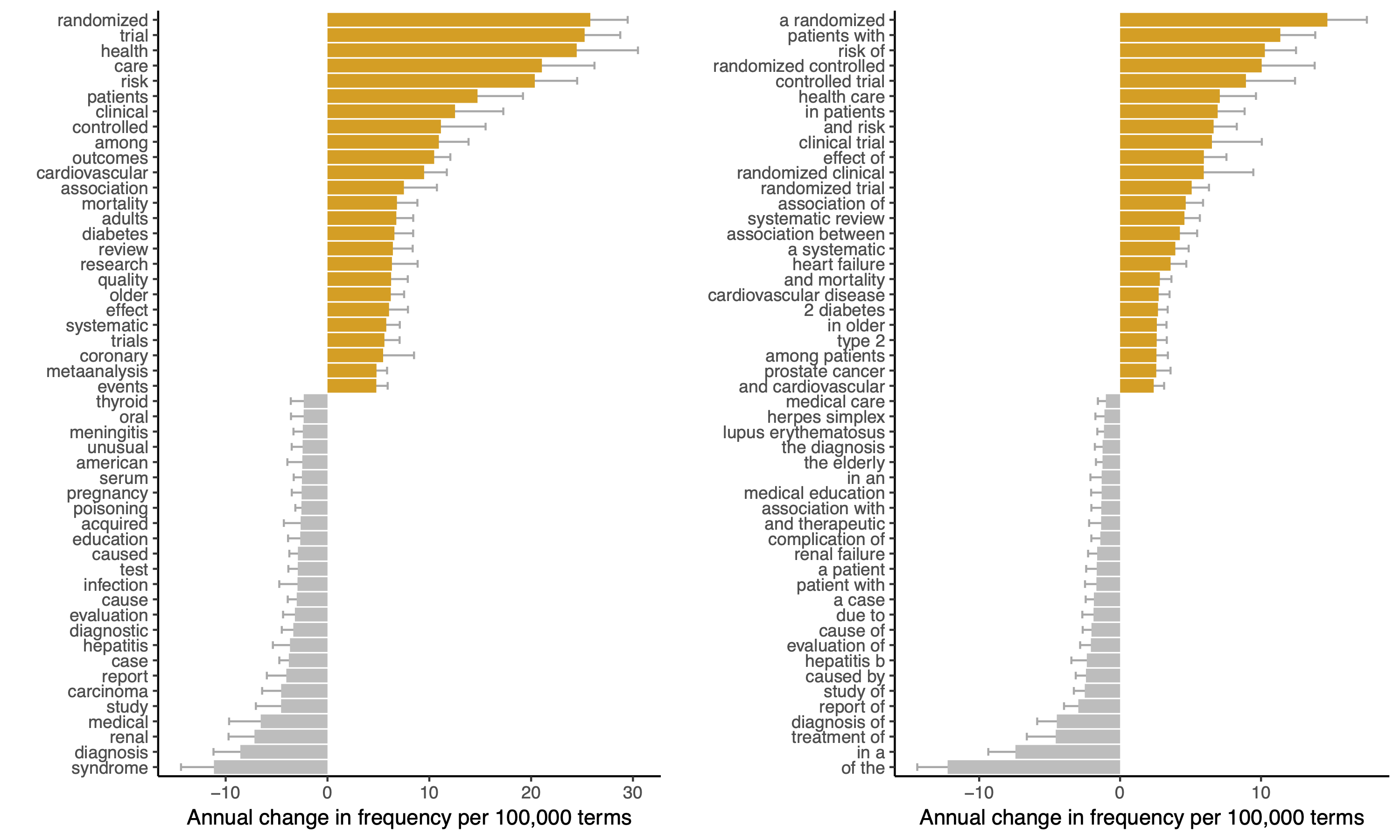Text Mining of the Medical Literature
In this project, I asked the question: How has the language of clinical investigation changed in the last 40 years, and what can we learn from this? I downloaded >300,000 PubMed records from 5 premier medical journals and focused on trends in article titles, identifying monograms (single words) or bigrams (adjacent pairs of words) with significant increases or decreases in frequency between the 1976-2015.

Figure 1, showing the top words (left) or adjacent pairs of words (right) with a change in frequency over the last 40 years in titles of JAMA
Focusing on titles of JAMA articles, I observed a number of interesting trends:
- The biggest change was a meteoric rise in the use of epidemiological terms (“randomized”, “trial”, “outcomes”, “risk”)
- There was a decline in the language of causality (“caused by”, “cause of”) with a concomitant increase in “association between”, “association of”
- The use of “the elderly” decreased significantly over time, while “older adults” and “older patients” has become more popular
- While “diabetes” was one of the top increased words, “diabetic” has become less popular. In general, we observed a trend in titles to separate patient from disease; while articles from prior decades would refer to “diabetic patients” or guidelines for “the diabetic”, recent decades are more likely to refer to “patients with diabetes” or “adults with diabetes”
- This trend toward separation of patient and disease was consistent in 4/5 journals, in which use of a patient-centered noun in the title (rather than the disease process alone) has became a much more common way to refer to medical entities

Figure 2, showing word clouds of increased (blues and greens) and decreased (reds and purples) monograms and bigrams in JAMA titles over a 40-year period
Chen GM, Pather SR, DeLisser HM. Trends in the Use of Common Words and Patient-Centric Language in the Titles of Medical Journals, 1976-2015.
JAMA Network Open (2019).